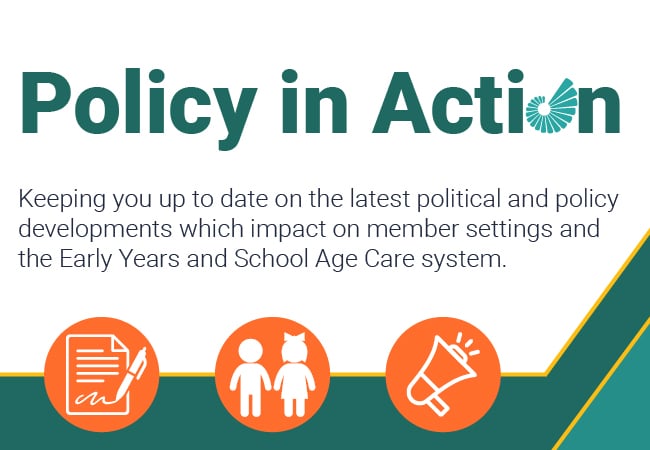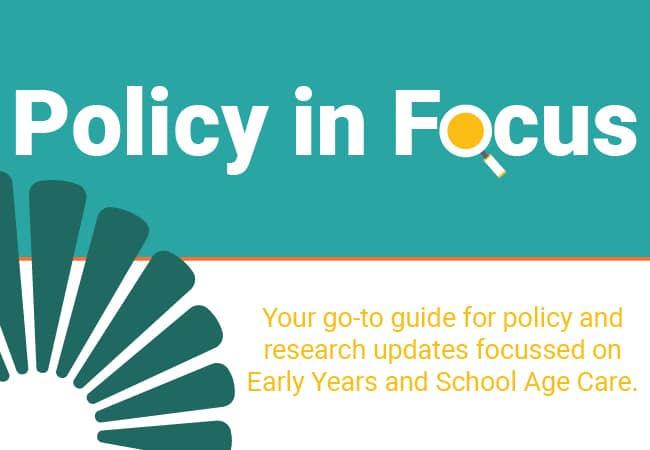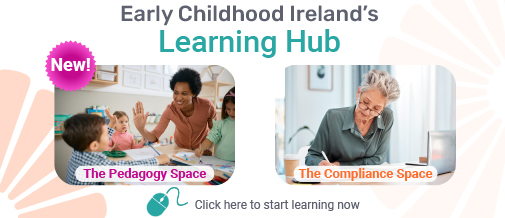Preparing Professionals
Is classroom-based learning enough to prepare early childhood teachers for their professional responsibilities?
Early childhood is a time of great opportunity and tremendous vulnerability for young children. Decisions made and actions taken during early childhood, affect children’s attitudes towards, and engagement with, learning for life. Yet, there is no consensus nationally or internationally about initial early childhood teacher preparation. What level of training is required, what percentage of practitioners should have a degree and so on? These are big questions. Another big question relates to whether preparation programmes should include work experience/practicum or how much time overall should be spent in the field during training? Although considerable attention has been paid to the need for a minimum qualification level, little, if any, thought has been given to the need for, or the benefits of practicum. It is exciting therefore, to provide an overview of the findings of a research study funded by the National Forum for the Enhancement of Teaching and Learning in Higher Education and, undertaken by PLÉ Ireland between 2016 and 2017. This study used an online questionnaire to explore the practicum component of full-time undergraduate ECEC degree programmes in Ireland from the perspective of 13 Higher Education Institutions (HEIs), 101 final year undergraduate ECEC students and 80 host settings providing practicum experiences for these students.
Findings indicate that professional practice is an integral aspect of full-time undergraduate ECEC degree programmes. While it differs from institution to institution, degree level students engage in lengthy practicum experience ranging from 540 hours to 1,000 hours over the duration of the degree. The proportion of time spent on practicum is on a par with Denmark where it represents 36% of the programme of study (Oberhuemer, 2014). It surpasses practicum experiences in England, Norway, Sweden and Iceland all of which fall between 14 and 20%.(Oberhuemer, 2014) as well a number of U.S states including California, Indiana, New Hampshire, New York and Rhode Island, where generally, practicum ranges from only a few to more than 100 hours (Whitebook & Austin, 2015).
The evidence suggests that classroom-based learning alone does not equip students with the knowledge, skills and competencies required to work in ECEC and, practicum is a vital aspect of preparation that enables them to bridge the theory practice divide; ‘it is hopefully where theory and practice merge for the students in a meaningful way’ (HEI response), it is an opportunity for students ‘to gain knowledge in a practical way so they can relate theory to practice’ (provider response) and while ’some specific theories in lectures don’t make sense at the time and you think ‘what does that have to do with anything! ‘It all makes sense then out on placement when you are able to put theory to practice’ (student response).
In common with international studies, students in the present study indicate that practicum is the most influential aspect of their training compared to classroom-based learning or coursework; ‘you learn different skills and strategies that you wouldn’t have learned by sitting in a lecture every day’. It is vital that students’ learning must extend beyond the walls of the lecture theatre, notes and text books into the ‘true life experience of dealing with the day to day aspects of a fully functioning early childhood setting’ (student). While a working group of the Early Years Education Policy Unit (2017) recommends that students should spend a minimum of 25% of their overall degree engaged in practicum, students in the PLÉ study, suggest that practicum ‘should be half the course [50%] and the other half in college, after all when we graduate we will spend all our time working directly with the children’.
It seems that settings benefit considerably from facilitating students engaging in practicum. Providers state that students are ‘very knowledgeable about Síolta and Aistear and have the skills needed to put these in place in the setting; observing, reflection, assessment, all the skills I would look for as a manager of a setting’. In addition, students often ‘bring an eagerness to the setting, a sense of progressiveness and an openness to new knowledge… [which] enlivens a desire for collective learning and expansion in the setting (provider response). Students therefore support communities of practice within settings where they are equally keen to learn from fellow practitioners. As one student notes, ‘I get the chance to implement what I have learned in college in a setting where other practitioners can support me, and I can learn from them’.
This research study leaves little doubt that practicum is the most influential aspect of ECEC students’ training, and that classroom-based learning alone is not enough to prepare early childhood teachers for their professional responsibilities. Over the coming months, many people will consider upskilling, while others with an interest in getting involved in ECEC will think about what course is best. Regardless of the level of training (Level 6, 7, 8) it is imperative that prospective students ensure that the programme includes a strong practicum component. In the absence of practicum, their learning will be conceptual and they will not gain the practical experience required to prepare them for their professional responsibilities as early childhood teachers.
Bio:
Dr. Mary Moloney is a researcher, author and lecturer in Early Childhood Education and Care at Mary Immaculate College, Limerick. She has a life-long interest in young children’s early education and care, as well as the professional identity, and well-being of early childhood educators, and governance within the sector. Her latest book ‘Intentional Leadership for Effective Inclusion in Early Childhood Education and Care’ which she coauthored with Eucharia McCarthy motivates educators to work towards the common goal of creating a truly inclusive culture in which all children, with or without disabilities, are supported and enabled to fully participate in every aspect of daily life and learning.









